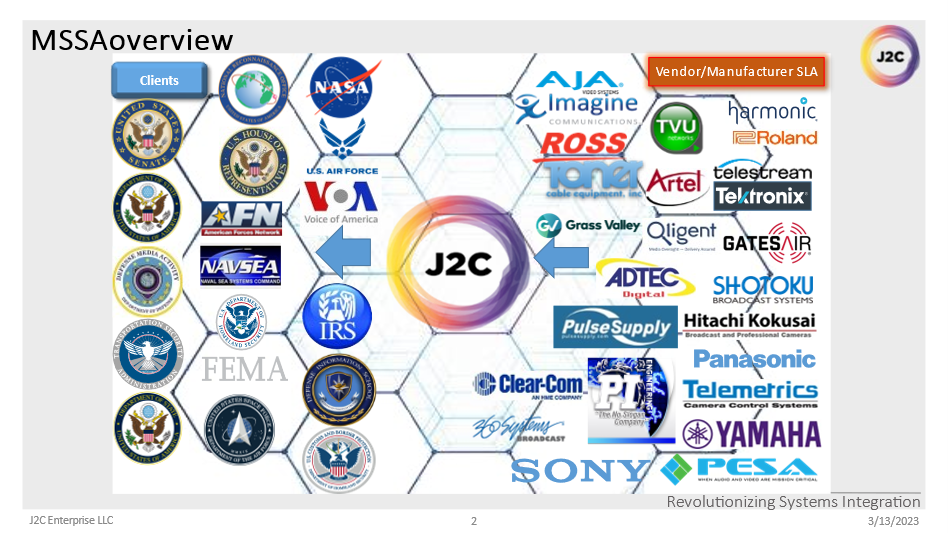Support & Services
Support Level Agreements (SLA) are an important aspect for our customers. It provides a level of protection and security from unexpected downtime. The SLAs also provides update, upgrade, and life cycle management pathway that ensures the solution continues to meet the customer's needs.
As a Service Contracting Options
- Provides the Client with the option of paying by the month as an Operating Expenses
- Support Level Agreement (SLA) is included in monthly payment. No separate Extended Warranty or Support Agreement
- Tailored Support Program
- No field service fees (SLA)
- Tech refreshes are included in the monthly payment. Changes in requirements or updates may cause an adjustment in monthly payment
- No forklift upgrades as this is performed as technical refresh as requirements change
- Stay ahead of the technology curve with ever changing requirements
Benefits
- Cost savings by bundling hardware, software and services
- Minimal upfront IT investment
- Regular, predictable expenses
- Scalability and integration
- Financial transparency
- Continuous monitoring of services
- Expert technical support
Master Service Support Agreement (MSSA)
Support Plan Details: An Operation/Maintenance and Support Plan provides for software updates and technical support needed to maintain a stable, optimized, and reliable system, minimize risk, and maximize the return on investment, there are varying levels of plans and is dependent upon the critical mission nature of the facility a sample of the benefits of a formal support plan are as follows:
- Mitigation of risk against unplanned downtime
- Resolve mission critical problems by providing a direct line to technical support experts who will assist with problem diagnosis, troubleshooting and problem resolution
- Proactively stay ahead of ever-changing standards
- Increase productivity by leveraging optimized software, performance, and reliability capabilities
- Simple Network Management Protocol (SNMP) for users to proactively, with the collection and organization of information about managed devices on communication networks and allows modifying that information to change the devices behavior
- Dedicated/private network services. In today’s facilities there are typically two networks. The first is the clients Wide Area Network (WAN), typically carrying the organizations primary network services and apps. The second is a private or dedicated network for the facilities Broadcast Media related information and content. The Broadcast Media network carries significantly more data traffic and therefore should not be placed on the organization’s main WAN. It is here where typical IT knowledge base is lacking. Broadcast Media networks utilize equipment that requires a unique set of network skills. Skills that are developed at the vendor/manufacturer’s product development stage. It is here that Broadcast Media networks do not conform to typical IT network design and best practices.
- Provides consultant services

Life Cycle Management Plan: Optimizing the life cycle of systems and assets beginning at conceptual design, continuing through shut down and decommissioning. This ensures effective asset investment decision-making and to achieve sustainable results in business performance, we take a holistic approach that addresses not only infrastructure assets, but also the supporting resources, business processes, data and enabling technologies that are critical to success.
This approach to life cycle asset management enables vast amounts of asset data to be effectively managed and leveraged at a practical day-to-day business level. With this approach, facilities can institutionalize asset management and make it a focus of the day-to-day business. Only by incorporating asset management into daily business routines can client facilities achieve optimum performance and full asset potential. Optimizing the life cycle of systems and assets beginning at conceptual design, continuing through shut down and decommissioning. This ensures effective asset investment decision-making and to achieve sustainable results in business performance, we take a holistic approach that addresses not only infrastructure assets, but also the supporting resources, business processes, data and enabling technologies that are critical to success. This approach to life cycle asset management enables vast amounts of asset data to be effectively managed and leveraged at a practical day-to-day business level. With this approach, facilities can institutionalize asset management and make it a focus of the day-to-day business. Only by incorporating asset management into daily business routines can client facilities achieve optimum performance and full asset potential.
- Operational and maintenance strategies
- Reliability engineering processes
- Ongoing training plan
- Decommissioning plan
- Dashboards with performance baselines and targets:
- Software-Defined Networking (SDN) helps organizations accelerate application deployment and delivery, dramatically reducing costs through policy-enabled work-flow automation
- Planned technical refreshes versus reactionary tech refreshes

